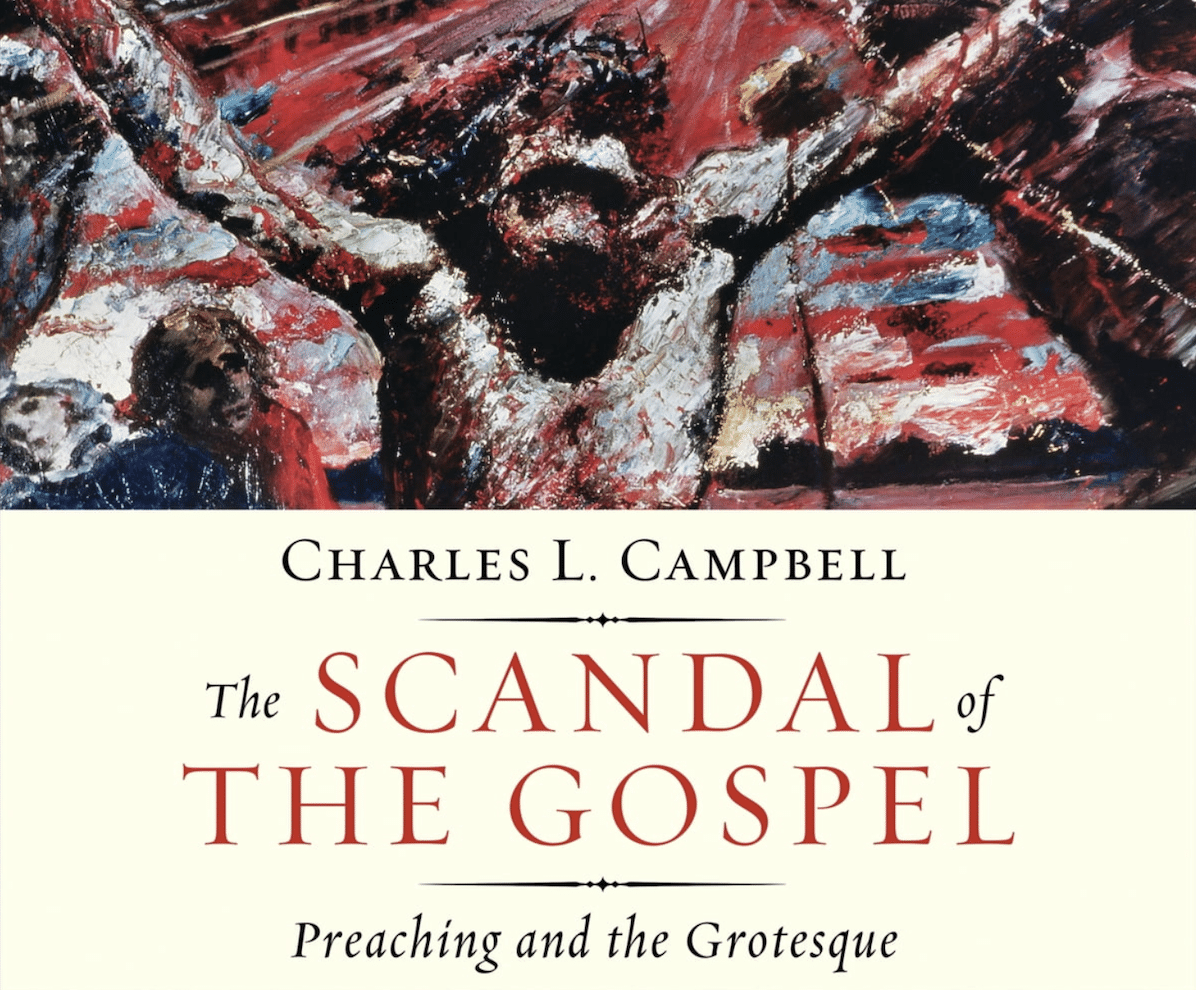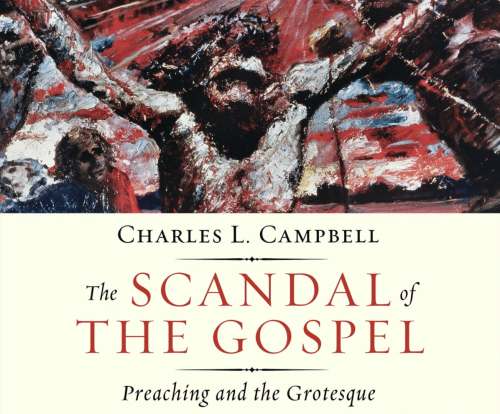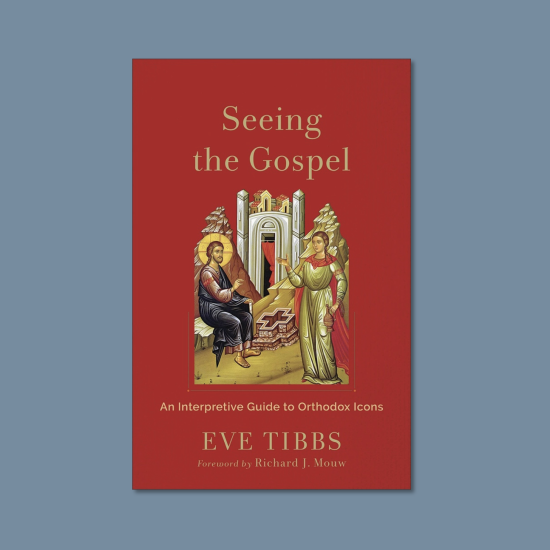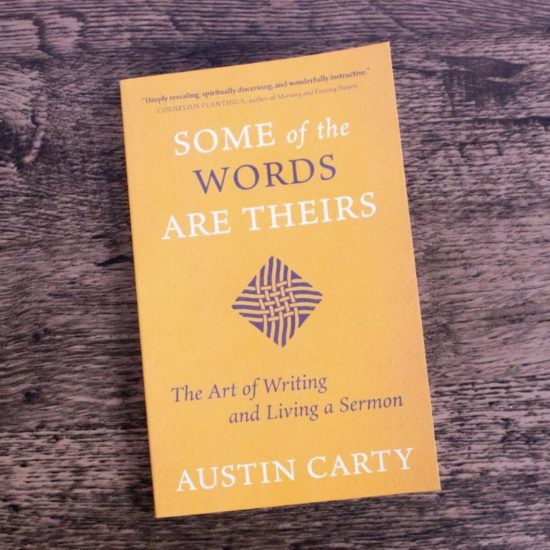

THE SCANDAL OF THE GOSPEL: Preaching and the Grotesque. By Charles L. Campbell. Foreword by Willie James Jennings. Louisville, KY: Westminster John Knox Press, 2021. Xviii + 98 pages.
When I think of preaching, I rarely think of the word grotesque. But, perhaps, I should. After all, the message of the gospel is rooted in the cross of Christ, which is at the very least scandalous (as the title of this book suggests) if not grotesque (as suggested by the subtitle). A visit to the art museum in Basel will introduce you to “The Body of the Dead Christ in the Tomb,” which is so realistic that it will seem rather grotesque. While many preachers love to indulge themselves in the gory details of the crucifixion and burial of Jesus, many others do not. In fact, it might be easier to preach the doctrine of the Trinity than the atonement. So, because much atonement preaching ends up with Jesus having to die to appease the wrath of an angry God, we avoid discussing the cross.

Robert D. Cornwall
The Scandal of the Gospel is the work of Charles Campbell, professor emeritus of homiletics at Duke Divinity School. The chapters present to the reader the lectures delivered the 2018 Beecher Lectures at Yale. In these lectures, which have a long history, Campbell takes up the grotesque in preaching. He reports that he has avoided the grotesque in his preaching, so he has much in common with the rest of us. So, what is it that he has resisted? The answer is simple. He found the grotesque too shocking and unnerving to present to a congregation. He did address foolishness in his preaching, but in examining his preaching he discovered that folly could be a way of sanitizing the grotesque in the gospel. So, here in this book, Campbell offers suggestions for presenting a more extreme homiletic.
The starting place for this set of reflections is Paul’s declaration in 1 Corinthians 1:23 that the “message of Christ crucified is both foolishness and scandal (stumbling block)” (p. xiii). What he discovered and wants to share with us is that in neglecting the grotesque the deeper message of the cross is missed. Willie James Jennings confirms this in his foreword to the book, noting that what Campbell does here is “teach us to see what God’s overturning of the given order means for proclamation.” (p. x).
The book is composed of four chapters (lectures). The first chapter titled “Jesus in the Grotto,” where Campbell describes what it means for the gospel to be understood in terms of the grotesque. In getting there he addresses the desire of preachers to move from a problem to a solution, that is seek restoration of order. But what if the gospel does not lend itself to resolution? The title of the chapter, “Jesus in the Grotto,” takes note of the fact that the word grotesque derives from the word grotto. It refers to the discovery of grottos in ancient Roman buildings that were covered by fanciful and disorienting murals that stood at odds with what is clear, balanced, and natural. Instead, they were composed of a “chaotic combination of incongruous and contradictory elements” such as beasts fused with animal bodies. That is creatures such as the centaur which has both human and animal elements. This was called grotto-esque. So how might our preaching engage with what is incongruous and contradictory? By attempting to force the gospel into our doctrines and theological systems, we attempt to control the contradictions. A grotesque gospel is “fluid, adaptable, and morph-able theology” (p. 11).
Having laid out an argument for engaging a grotesque gospel, in chapter two he addresses the need to resist the “weaponized grotesque.” That is, in engaging with the grotesque gospel one must resist turning people into things. What he means by this, is envisioning people as issues to be resolved. The reason for resisting this move is that things don’t have feelings. Thus, he writes that “the dehumanizing, weaponized grotesque—used to create fear, anger, and disgust at the targeted group—is one of the most important rhetorical tools for maintaining a threatened white, male, heterosexual—and even Christian—order.” (p. 21). To illustrate this, Campbell invites us to consider the “preachers of the fictional page.” These are primarily women who, though they were excluded from the pulpit, created sermonic messages through fiction. The primary person detailed here is Harriet Beecher Stowe, whose Uncle Tom’s Cabin helped bring light on the realities of slavery. While Stowe exemplifies resistance to weaponized grotesque in the form of slavery, Campbell notes the problems inherent in her message, in that in her writing slaves require white saviors. Nonetheless, we see here a response to take note of. The question that he explores is how the preacher can humanize persons who have been turned into things. The concern here is the problem of using the stories and memories of others. It is possible to do this appropriately, but it is difficult. The key is listening so we can let the voices of the person whose life is being shared actually speak and are not appropriated for homiletical purposes.
The Third Chapter is titled “Incarnate Word: Preaching and the Carnivalesque Grotesque.” He refers here to John 1:14, suggesting that we might paraphrase the verse as “The word became grotesque and dwelt among us.” He writes that “John proclaims a paradoxical anomaly that transgresses our binary categories and subverts the norms of human and divine. Jesus’ fleshly divine body is almost a classic definition of the grotesque.” (p. 41). The incarnation involves degradation, of the divine coming to earth. Here he uses the imagery of carnival, which he says, “scandalously celebrates the lower body, with all of its reproductive, digestive, and excretory functions.” (p. 42). We tend not to conceive of Jesus in these categories, and yet as Campbell notes Jesus’ body is a leaky one. In laying out this Campbell brings into the conversation such carnivalesque items as the infamous “Piss Christ” photos and Pussy Riot’s protest against the Russian church’s exclusion of women. The key here is crossing boundaries, something many of us struggle with in our preaching. People want clean, easy-to-digest messages, but this leads to a sanitizing of the gospel. However, when we do this, we again miss the point of the Gospel which is not clean or easy to digest.
The final chapter/lecture is titled “Apocalypse Now”, and it focuses on “Preaching and the Environmental Grotesque.” Here Campbell addresses the reality of climate change, which is apocalyptic in its implications. So, how do we address this reality in our preaching? Where do we find hope? Despair seems a more likely emotion, and yet is there not a need for hope? Here again, we must face the reality of a weaponized grotesque in which the world doesn’t just get hotter, it gets meaner and uglier. Nevertheless, “in the grotesque Body of Christ Christians are deeply and inextricably interwoven with the cosmos. We cannot treat creation as a commodity to exploit; to do so is to commodify Jesus.” Thus, in our preaching, we are called on to speak not only for human beings but the entire created order (p. 79).
While we may desire to preach a cleaner and more orderly message, which likely will be better received, the grotesque is ever-present and must be engaged. At points, it must be welcomed and at others resisted. Preaching is a place where this must happen. Campbell’s The Scandal of the Gospel is brief and yet compelling. I know that I like the cleaner and orderly way of preaching, but we live in a time when that is not always possible. Thus, Campbell challenges us to look beyond the safe path and embrace the grotesque. Now, if you’re looking for a method of preaching you won’t find it here. However, what you will find is an invitation to dive deeper into the less orderly and more chaotic realities of the grotesque, which Jesus took on in the incarnation. Having done this, we can then build sermons that address the grotesque.
This review originally appeared on BobCornwall.com.
Robert D. Cornwall is an ordained minister in the Christian Church (Disciples of Christ). Now retired from his ministry at Central Woodward Christian Church (Disciples of Christ) of Troy, Michigan, he serves as Minister-at-Large in Troy. He holds a Ph.D. in Historical Theology from Fuller Theological Seminary and is the author of numerous books including his latest books: Called to Bless: Finding Hope by Reclaiming Our Spiritual Roots (Cascade Books, 2021) and Unfettered Spirit: Spiritual Gifts for the New Great Awakening, 2nd Edition, (Energion Publications, 2021). His blog Ponderings on a Faith Journey can be found at www.bobcornwall.com.






